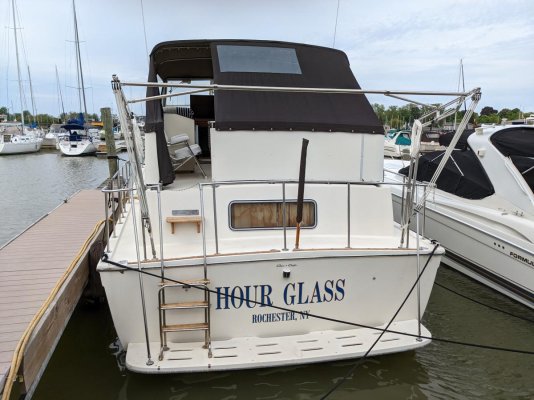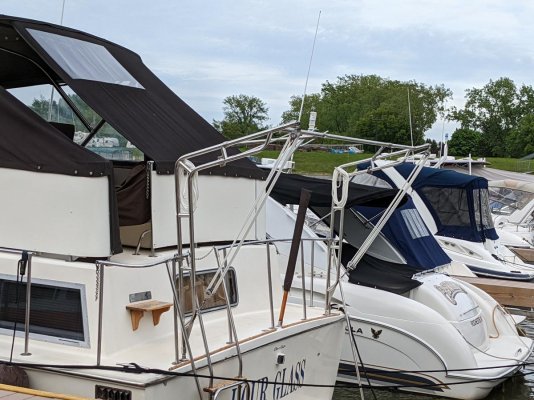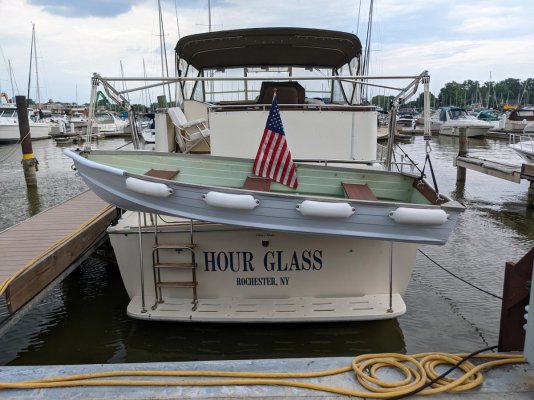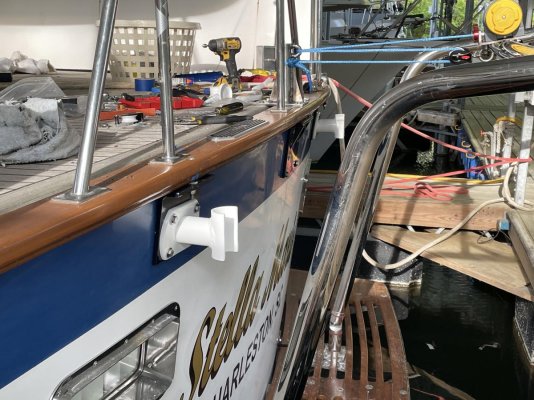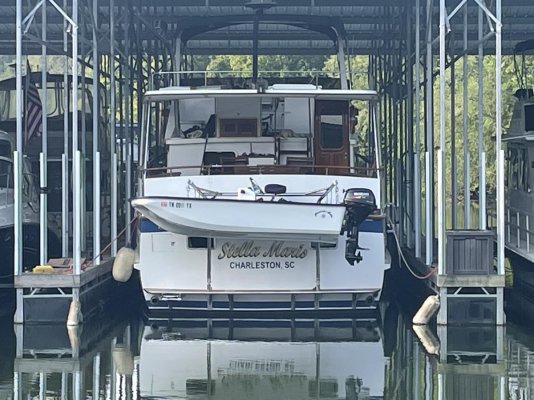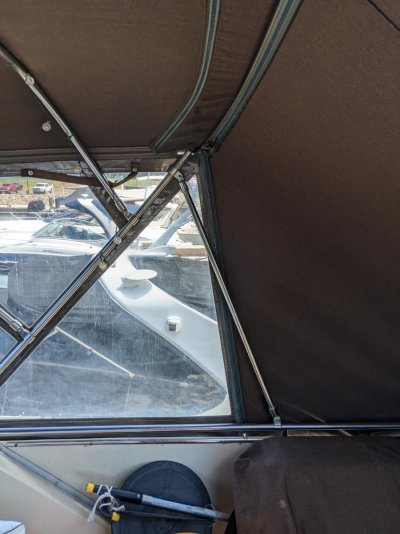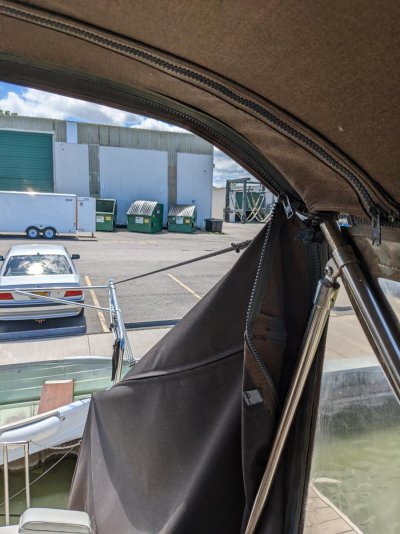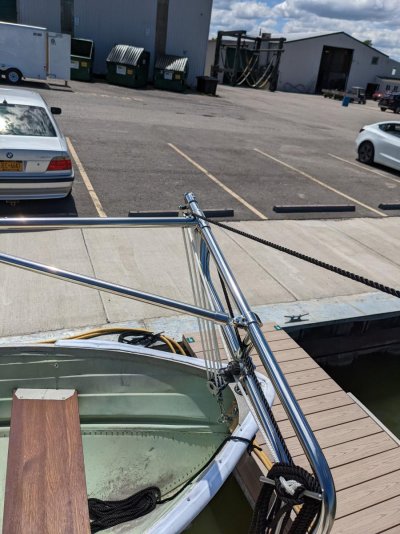rslifkin
Guru
- Joined
- Aug 20, 2019
- Messages
- 7,582
- Location
- USA
- Vessel Name
- Hour Glass
- Vessel Make
- Chris Craft 381 Catalina
I finally got the dinghy hoisted in my new davits over the weekend. But I definitely have a little more flex in the stern rail assembly than I'd like, even with added bracing to the swim platform (at an unfortunately shallow angle).
I've been thinking of a few ideas. Either tie the supports down to the platform to the deck to tension them inward slightly. Or removable stays to the back of the trunk cabin (or the deck) that get removed when docked for easier passage on the decks.
I've included pictures of the davits both with and without the dinghy so you can see how the setup is laid out. Unfortunately the rail sits too far in from the transom, so I had to put the davit bases on the deck for everything to fit together nicely rather than putting them on the transom.
I figure some of you guys have dealt with a similar concerns, so what are everyone's thoughts on how to best add some bracing to prevent the rail from bending outward?
I've been thinking of a few ideas. Either tie the supports down to the platform to the deck to tension them inward slightly. Or removable stays to the back of the trunk cabin (or the deck) that get removed when docked for easier passage on the decks.
I've included pictures of the davits both with and without the dinghy so you can see how the setup is laid out. Unfortunately the rail sits too far in from the transom, so I had to put the davit bases on the deck for everything to fit together nicely rather than putting them on the transom.
I figure some of you guys have dealt with a similar concerns, so what are everyone's thoughts on how to best add some bracing to prevent the rail from bending outward?

